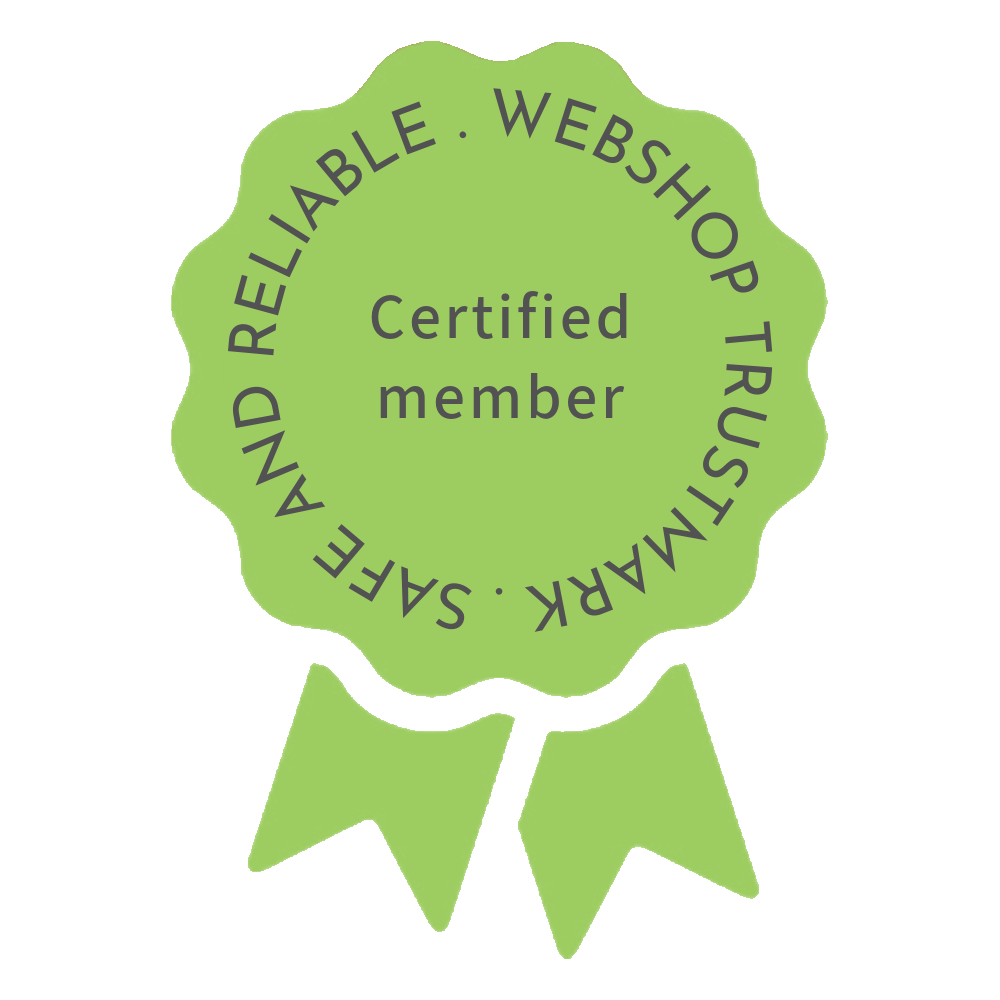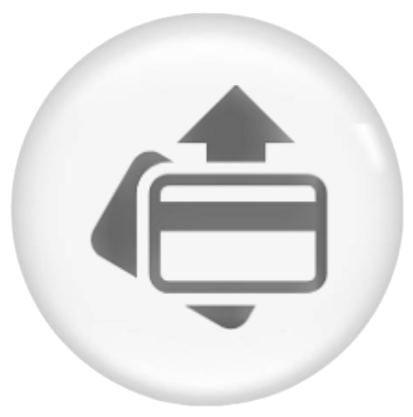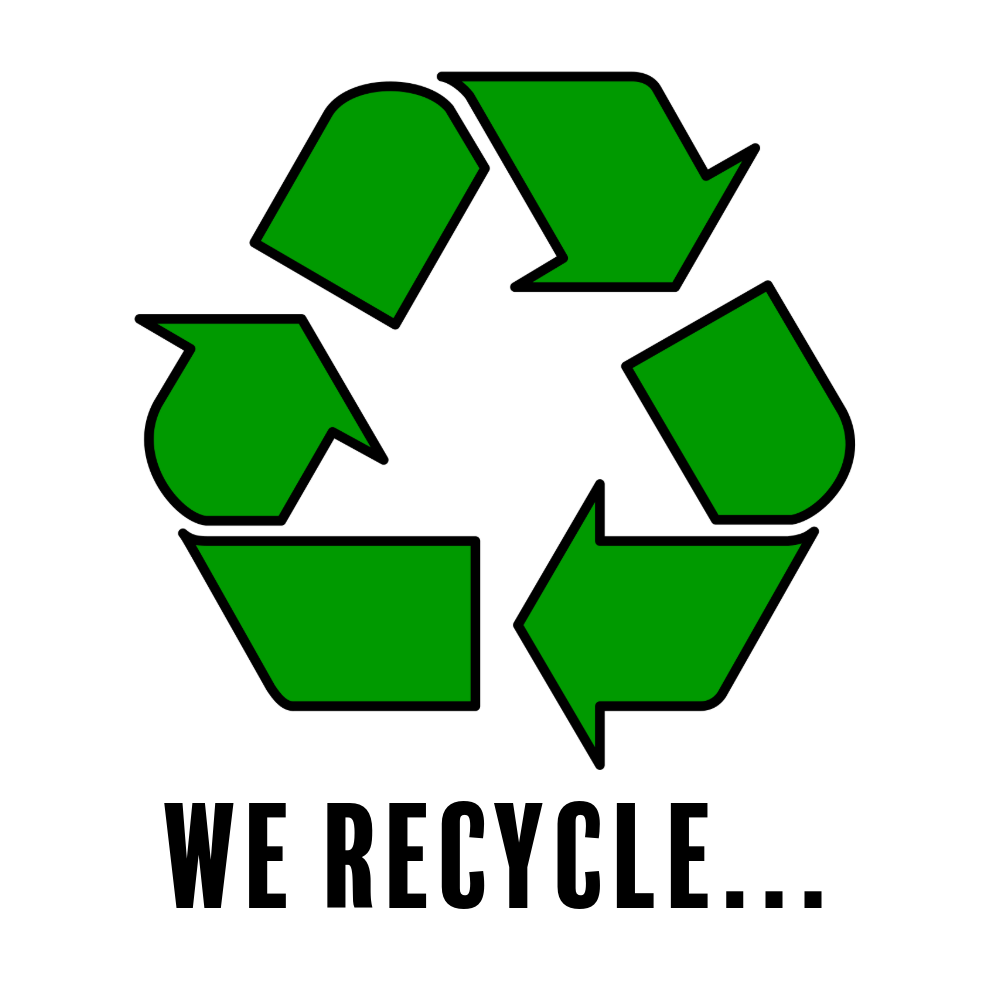More about CERAMICS
Ceramics is a collective term for pottery baked at temperatures up to about 1100 degrees Celsius such as: crockery, pots, bowls, goblets, pitchers and tiles.
Pottery is softer and less durable than stoneware and porcelain. Because of its porosity, most of the time it should be enamaled. For enamel a certain type of glass is used. This melts at (not too) a high temperature and flows over the surface of the product. This enamel may be transparent or opaque in color. Enamel is also used to give pottery his various colors. Ceramics is only called stoneware if it is baked at a temperature by more than 1200 degrees Celsius. Suitable clay for these products is kaolin (China clay), which is a fine white type of clay.
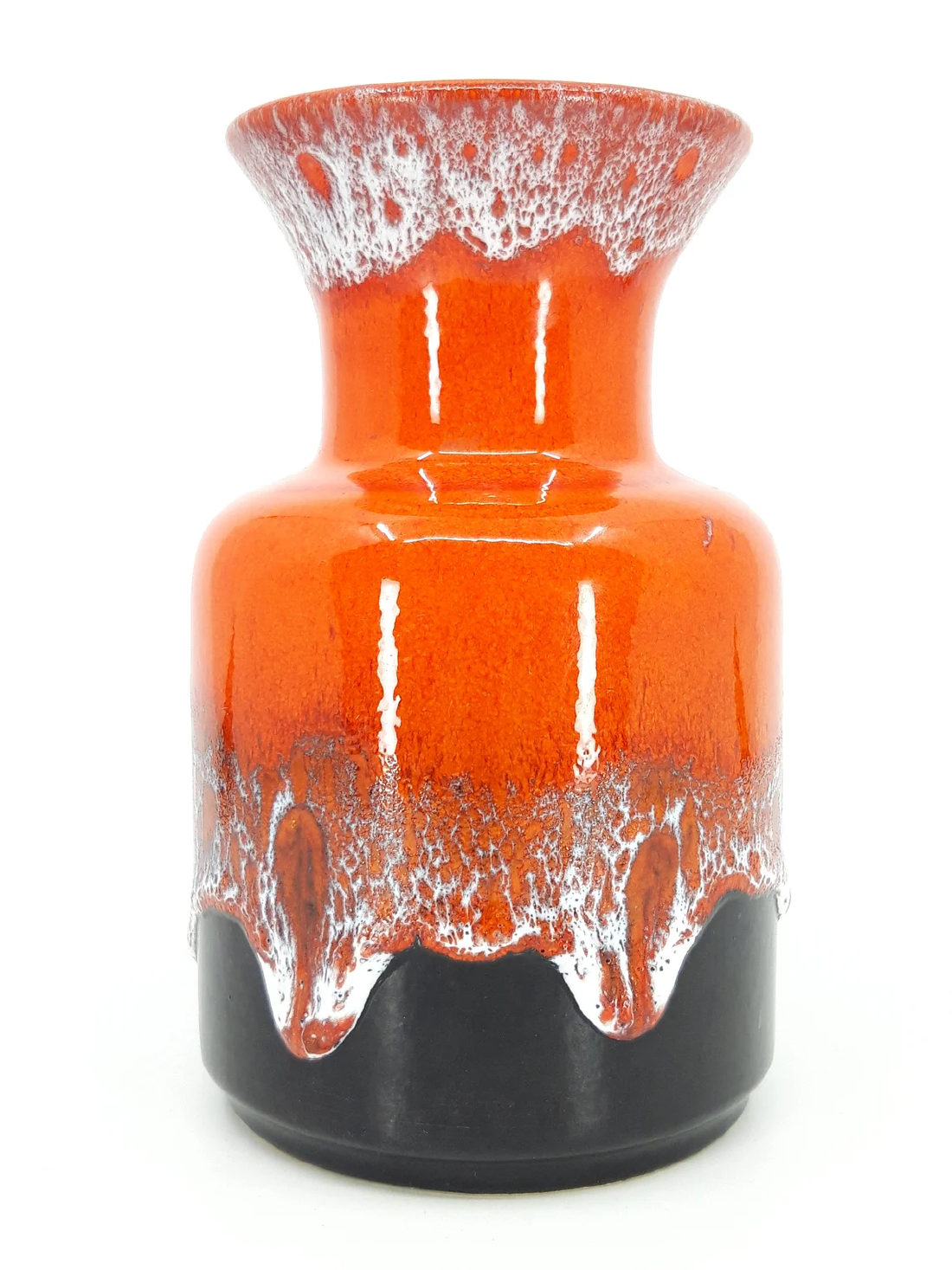
Various forms of pottery are: pots, jars, jugs, cups, bowls, platters and vases. Well-known and increasingly popular products of pottery are called: West-Germany or Fat Lava vases. These vases are as the name suggests, made in Germany.
The 50s, 60s and 70s were a golden age for the ceramics factories in the former West-Germany. Large series ceramics could be manufactured there. Designers also got plenty opportunities to experiment with different enamel, patterns and shapes. Especially producer Schreurich was one of the first to work with colorful and unusual designs in all kinds of dimensions, in a style that is currently known under the name of West-Germany vases.
A few decades ago, they were called: "those ugly 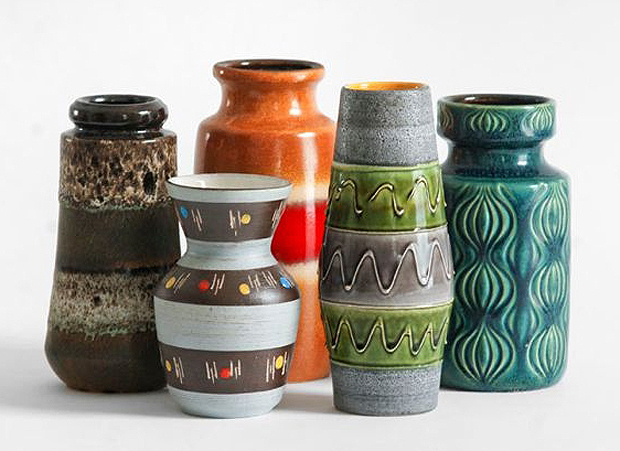 vases”. Now they have become true collectibles. So you see this ugliness is a subjective concept and it is very time-related. These vases were made by pouring liquid clay into a mold and dried until it was hard enough. After drying, the enamel was applied and the vases went into the oven. During the process the enamel was activated to create beautiful colors, drops and foamy blobs. Also because the vases were hand-decorated they received each a unique appearance. The term "fat lava" arose because of its similarity to volcanic lava and of the thickness of the enamel applied.
vases”. Now they have become true collectibles. So you see this ugliness is a subjective concept and it is very time-related. These vases were made by pouring liquid clay into a mold and dried until it was hard enough. After drying, the enamel was applied and the vases went into the oven. During the process the enamel was activated to create beautiful colors, drops and foamy blobs. Also because the vases were hand-decorated they received each a unique appearance. The term "fat lava" arose because of its similarity to volcanic lava and of the thickness of the enamel applied.
On the bottom you can read the style number, imposed or engraved. The first number indicates the shape of the model of the vase. The second number is the height in cm. Also, one can still read the text 'W-Germany' sometimes combined with a logo. On the vase usualy a sticker was pasted with the name of the factory. These stickers are also an important tool for identification.
The West-German ceramics factories placed different marks on the bottom of the vases: Made in West-Germany, West-Germany or just to W.Germany. This is done until 1990 when East- and West-Germany ceased to exist, and Germany became one country again. At Retro & Design you will find West Germany vases on a regularly base.








